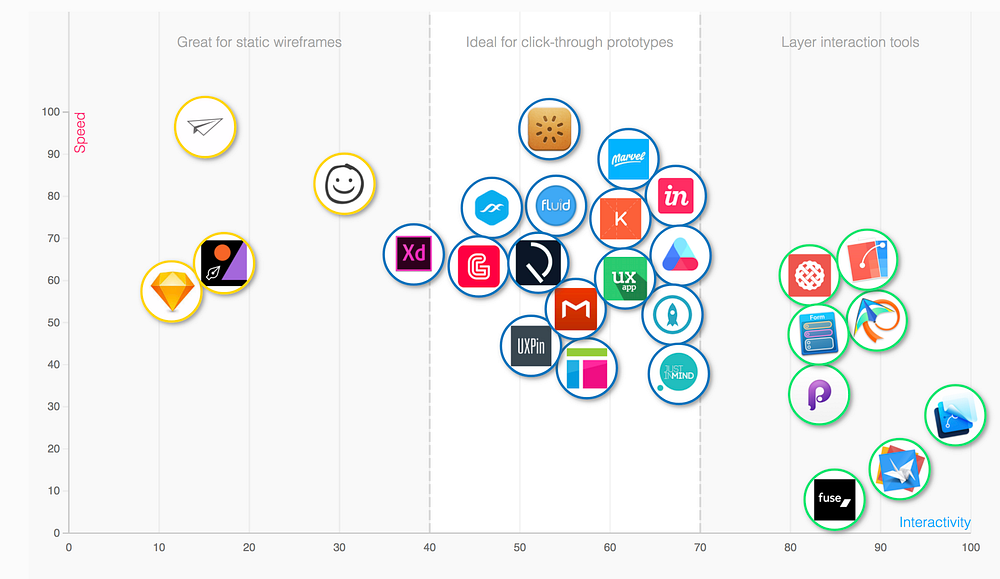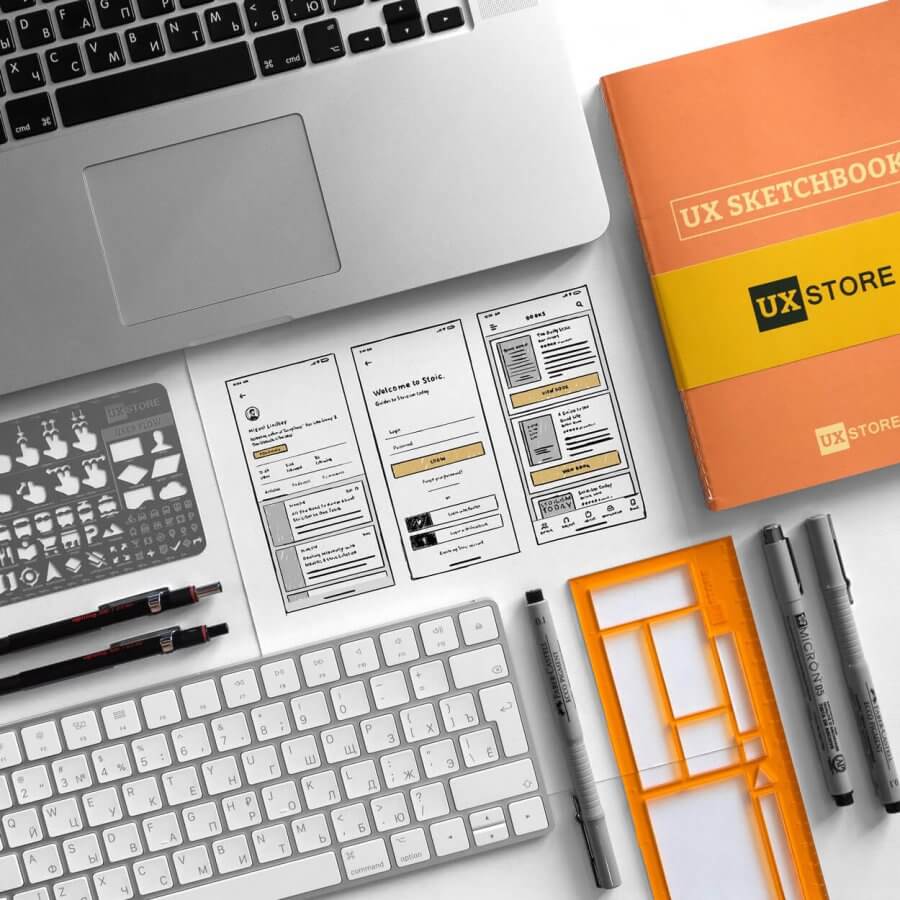Low-fi or High-fi Prototypes?
Prototypes provide a concrete form to abstract ideas. They remove ambiguity and allow us to test assumptions with an experience that reflect what we want the end product to provide. And when used correctly, prototypes boost project accuracy, mitigate risk and increase project efficiency. In fact, according to the book Prototyping: A Practitioner’s Guide, prototypes reduce requests for clarification by 80%, increase accuracy by 50% and reduce post-release bugs by 25%.
Prototypes also help us:
- Communicate Concepts: Prototypes give life to new concepts, helping us communicate ideas in a way words simply can’t.
- Identify Opportunity: A quick paper prototyping session can help extract possible solutions from others and identify quick wins and workarounds.
- Create Consensus + Buy-in: It’s amazing how differently two people can interpret a feature. Prototypes are a great way to see if everyone is on the same page.
- Estimate feasibility: By identifying key functionality and project requirements in a prototype, teams can more accurately estimate its feasibility and effort. It allows teams to make trade-offs on what’s launch-critical vs what can be rolled out later.
- Test earlier and more often: Test assumptions in a cheap medium and earlier in the process.
At Massive, we create different kinds of prototypes depending on the project requirements and the kinds of feedback we’re looking for. Below we’ve broken down two kinds of prototypes (low-fi and high-fi), their pros and cons and some tools to help make them.
Low-fidelity Prototypes
Here at Massive, we use low-fidelity prototypes to in meetings and design workshops to test assumptions and achieve clarity and consensus on key features.
A study in 1996 suggested that low-fidelity mock-ups are as effective in revealing design flaws as high-fidelity mock-ups, at least in this early stage (Virzi et al, 1996)

Advantages of Low-fidelity Prototypes:
- Requires little to no design or technical ability
- Stirs creativity and unblocks ideas
- Quickly and cheaply solidifies critical features and navigation requirements
- No software required: Can be done using sticky notes, chalk/whiteboards, paper, etc.
Challenges with Low-fidelity Prototypes:
- Paper prototypes (for example) demands a lot of imagination from users and stakeholders.
- Often require an explanation of context and workflow
- Can be difficult to get stakeholders and users to focus on “features” rather than aesthetics
- Some participants may feel uncomfortable participating due to lack of design skills
High-fidelity Prototypes
Middle and high fidelity prototypes are useful when user journeys, features and navigation have been identified. For this reason, it’s not uncommon that they are the next step after low-fidelity.

Advantages of Hi-fidelity Prototypes:
- Test user journeys, workflows, functionality and navigation with users and stakeholders
- Communicate functionality and user journeys with key stakeholders
- Align expectations with stakeholders
- Showcase interactions that will be part of the end product
- Help estimate effort required for interactions and animations
- Communicate interactions and functionality to the development team
- Collaborate with multiple team members and stakeholders
- While not as cost effective as low-fi, high-fi prototypes are still relatively inexpensive and fast
Challenges with Hi-fidelity Prototypes:
- Sometimes hard to set stakeholders’ expectations and communicate limitations
- Links to hi-fi prototypes are sometimes shared to unknown stakeholders, allowing for conflicting feedback and ambiguity.
- Many tools don’t communicate interactive elements such as transitions and animations
- Some tools can become costly, especially when pricing model is based on # of projects and users.
Choosing the Right Prototyping Tool
With so many prototyping/mockup tools available, how do you choose the right tool? The smart folks over at Prototype put together this amazing resource to compare prototyping tools based on different needs.

What’s your favourite prototyping tool? Did we miss it?

